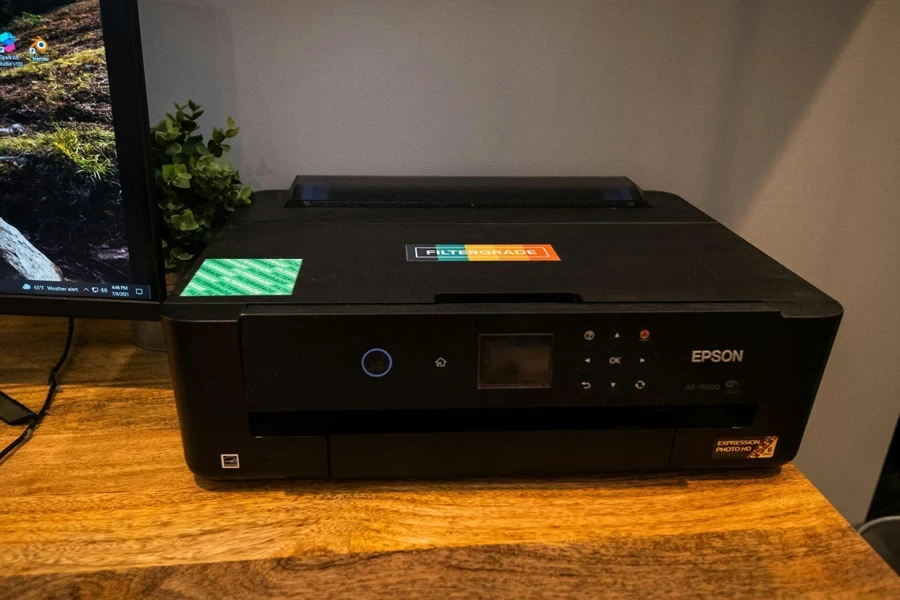Table of Contents
● Introduction
● Market overview
● Things to consider when selecting printers and scanners
● Types of printers and scanners and their features
● Conclusion
Introduction
In today’s fast-paced business landscape, the integration of advanced printers and scanners transcends mere convenience, emerging as a strategic asset crucial for optimizing operations. These devices enhance operational efficiency by streamlining document management processes, enabling quick access to printed and digital documents, and reducing costs through multifunction capabilities that negate the need for multiple devices. As businesses increasingly adopt digital workflows, these printers and scanners support this shift with wireless connectivity and cloud-based functionalities, allowing seamless integration with IT infrastructure and enabling device access from various locations. Moreover, they are pivotal in maintaining the quality and security of business documents through high-resolution scanning and advanced encryption, thus ensuring the protection of sensitive information. As technology evolves, the central role of printers and scanners in business environments continues to expand, making them indispensable in modern business operations.

Market overview
The global market for printers and scanners is witnessing significant growth, driven by technological innovations and an increasing demand for efficient document management solutions across various industries. According to Straits Research, the market, valued at approximately USD 47.29 billion in 2021, is projected to reach around USD 68.81 billion by 2030, growing at a compound annual growth rate (CAGR) of 4.8%. This growth reflects the sector’s robust adaptability to emerging market demands and technological advancements, with major players such as HP, Canon, and Epson continuing to dominate the market. These companies are at the forefront of integrating AI and IoT to enhance product functionality and user interaction, maintaining substantial market shares.
Recent advancements in technology have focused on improving connectivity and sustainability, features that are increasingly demanded by businesses aiming to reduce their environmental impact. Modern printers and scanners are equipped with cloud printing capabilities and high-efficiency energy use, aligning with the corporate shift towards ecological sustainability. Additionally, the integration of advanced security features, such as biometric authentication and advanced encryption, caters to growing concerns about data security in digital and print workflows. These trends highlight the ongoing evolution of the sector and its pivotal role in shaping business document management in a digitalizing world.

Things to consider when selecting printers and scanners
Print quality
When selecting printers and scanners, the quality of print and scan is paramount, especially for businesses that produce client-facing materials. Printers with high resolutions, measured in dots per inch (dpi), are crucial for creating crisp, detailed text and vibrant images that reflect professional standards. Similarly, scanners need to offer high-resolution capabilities to accurately capture and reproduce fine details, which is particularly important for sectors that handle artwork, architectural plans, or technical drawings. Ensuring these high standards in both print and scan quality not only enhances the appearance of physical documents but also ensures that digital reproductions maintain fidelity to the original.
Device speed
The speed of printers and scanners is a critical factor in maintaining business efficiency. For environments where document handling is frequent and voluminous, a printer’s speed, which is typically measured in pages per minute (ppm), becomes a key consideration. Faster printers reduce wait times and can significantly boost productivity by handling more tasks in less time. Similarly, scanners equipped with features like automatic document feeders (ADF) facilitate quick scanning of multiple-page documents, which is essential for offices converting large volumes of paper documents into digital formats. This rapid processing capability is vital for maintaining smooth operational workflows in busy office settings.
Connectivity
Modern businesses require printers and scanners that offer flexible connectivity options to integrate seamlessly into their existing IT infrastructure. Wireless and networked solutions enhance device accessibility for multiple users without the need for cumbersome wiring, supporting a cleaner and more efficient workspace. USB connections provide a straightforward setup for single-user scenarios, often favored in smaller offices or for personal use. Advanced models now support cloud-based functionalities and mobile connectivity, allowing direct printing and scanning from smartphones and tablets. This feature supports the dynamic nature of contemporary work environments where mobility and flexibility are highly valued.
Device selection
The decision between multi-function devices (MFDs) and standalone printers or scanners often hinges on considerations of office space, budget, and specific operational needs. Multi-function devices, which integrate printing, scanning, copying, and sometimes faxing into one unit, offer a space-saving solution that can be more cost-effective for small to medium-sized businesses. On the other hand, standalone devices may be necessary when specialized functionality is required that MFDs cannot provide, such as high-speed scanning or large-format printing. This choice must align with the business’s specific requirements to ensure that the selected equipment adequately supports its operational demands.
Cost analysis
A thorough cost analysis is essential for making an informed decision when investing in new printers and scanners. This analysis should consider both the initial purchase price and the long-term operational costs, including maintenance and supplies. Inkjet printers may offer a lower initial cost but tend to have higher ongoing expenses due to the cost of ink cartridges. Conversely, laser printers usually require a higher initial investment but are more economical over time due to the efficiency and longevity of toner cartridges. Additionally, the potential costs for parts replacement and regular servicing must be considered to determine the total cost of ownership. This comprehensive financial assessment helps businesses select devices that not only meet their printing and scanning needs but also fit their budget constraints over the long term.
Types of printers and scanners and their features
Types of printers
The landscape of printing technologies showcases a variety of printer types, each catering to specific user needs. Inkjet printers excel in producing high-quality color outputs with exceptional detail, ideal for printing photographs and complex graphics; they propel droplets of ink onto paper, allowing for nuanced color and finish. Laser printers are preferred in business environments for their efficiency and rapid output. They use a laser beam to produce precise, fast, and cost-effective prints suitable for large-volume tasks requiring clear text. Solid ink printers offer a unique, cartridge-free process that uses solid ink blocks, reducing waste and producing vibrant, saturated colors perfect for high-impact graphics. Thermal printers, mainly used for labels and receipts in retail and shipping, utilize heat to transfer images onto paper, providing durability against environmental factors such as heat and moisture.
Types of scanners
Scanners vary widely to meet different functional needs in diverse environments. Flatbed scanners, featuring a glass pane for placing documents and objects, allow for the versatile scanning of everything from simple text documents to bulky items like books without damaging originals, ideal for versatile digitization needs. Sheet-fed scanners enhance office efficiency by automatically feeding documents into the scanner, which is suitable for high-volume scanning tasks. Handheld scanners provide flexibility and mobility, allowing for direct capture of text and images from various sources in any location, making them especially useful for businesses that manage inventory or archive resources on the go, thus boosting productivity and easing document management logistics.
Features of printers and scanners
Modern printers and scanners come equipped with features that enhance their utility and integration into business workflows. Auto-duplexing allows for printing or scanning on both sides of a page, reducing paper usage and streamlining document handling. Cloud connectivity is increasingly crucial, as it enables devices to connect to online storage services, allowing users to access and print documents from anywhere, which supports remote and hybrid work models. High-resolution outputs are essential for fields requiring detailed graphic presentations or high-quality reproductions, such as marketing materials or architectural plans.
Model recommendations for various business sizes
The choice of printers and scanners can significantly impact operational efficiency. Small businesses prioritize cost-effective models that provide a balance between price and performance, while large enterprises opt for high-end models designed for volume and durability. Graphic designers and other visual arts professionals might seek devices that offer the highest precision in color and detail to ensure that final prints match their artistic vision.
Consumer recommendations
Recommendations from consumers and experts often highlight models that combine reliability, efficiency, and user satisfaction. These reviews can guide potential buyers toward devices that are well-suited to their specific business environments and needs, focusing on long-term reliability and cost-effectiveness. Models that receive high marks for ease of use and minimal maintenance are particularly valued in fast-paced business environments where downtime can cause significant disruptions.
Conclusion
Choosing the right printer and scanner is critical to ensuring that business operations run smoothly and efficiently. The appropriate technology not only meets current needs but also anticipates future demands, enabling businesses to stay agile and responsive. Companies need to consider not just the initial cost but also the functionality that will align with their operational workflows, client needs, and quality standards. This approach helps in selecting devices that enhance productivity while managing costs effectively. As businesses plan for future growth, they must also consider the longevity and scalability of their printing and scanning solutions. Investing in technology that can adapt to evolving business needs and integrate with future advancements in digital workflows ensures long-term viability and profitability. Balancing these considerations will provide a strong foundation for sustaining and growing business operations in a competitive landscape.







